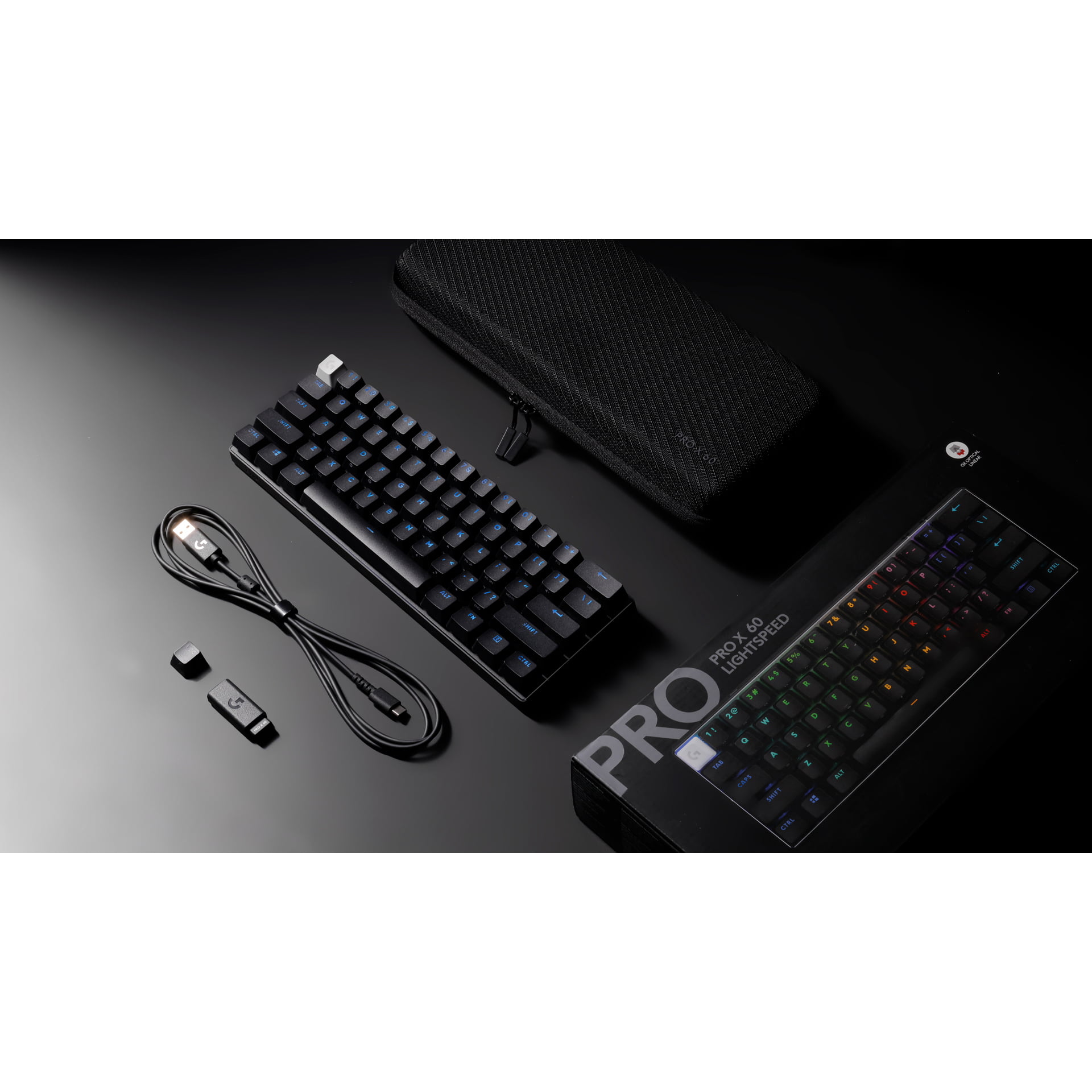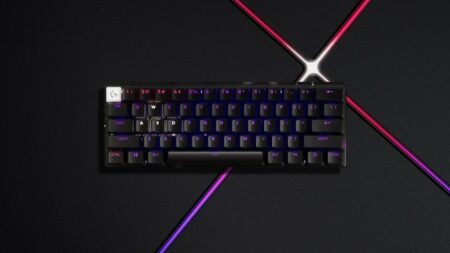CONS
- Wobbly keys
- Keyboard feet don’t offer much tilt or height
- No wrist rest
- Expensive
LOGITECH PRO X 60 SPECS
| Number of Keys |
61 |
| Interface |
USB-C, 2.4 GHz Wireless, Bluetooth |
| Key Switch Type |
Logitech GX Optical Linear Switches |
Just a couple of months ago, we were highly impressed by Logitech’s most recent release of a competition-ready keyboard, the Logitech G Pro X TKL. This tenkeyless (TKL) board boasts comfortable keys, multiple connectivity options, and a plethora of features that are perfect for gamers who want to stay competitive. However, what if the TKL format is still too large for your liking? In that case, you might find the new Logitech G Pro X 60, intriguing. This keyboard takes almost everything Logitech included in the TKL version and shrinks it down into a compact 60% keyboard, complete with innovative optical switches. Despite a few drawbacks, such as chattering keys and the absence of tilt, the keyboard’s steep price becomes harder to justify when compared to excellent alternatives like the Corsair K70 RGB Pro Mini.
Logitech’s Design: A Brief Overview.
With the introduction of 75% keyboards, it is often overlooked how appealing a 60% board can be. For a long time, mechanical keyboard enthusiasts and programmers have favored this compact size. In recent years, these smaller keyboards have gained popularity in the gaming community, especially in esports. This is understandable as professional gamers and passionate amateurs appreciate the lightweight design, enhanced portability, and the ability to free up desk space. Additionally, the smaller size allows them to position their keyboard in a way that optimizes gaming performance.
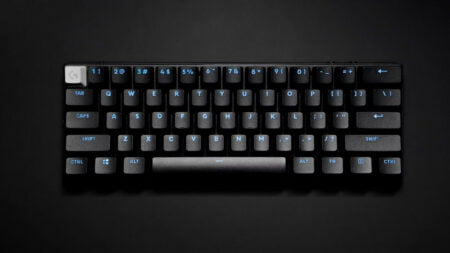
It is quite astonishing to discover that Logitech is venturing into the 60% keyboard market for the first time. Despite this, the company has managed to create a keyboard that incorporates various impressive features. Logitech sought design input from numerous renowned esports athletes and as a result, their keyboard includes dual-shot PBT keycaps, a Game Mode button on the right side, a volume roller on the left side, and two buttons for 2.4GHz wireless and Bluetooth connections. Additionally, a solitary USB-C port is positioned next to the power button on the top left.
The Logitech Pro X 60 is a compact keyboard, measuring 11.4 by 4.1 by 1.5 inches (HWD) with only five rows of keys. It takes up very little space and is slightly smaller than the SteelSeries Apex Pro Mini Wireless. Logitech deserves credit for the keyboard’s small size, which comes in black, magenta, or white (our test unit’s color). It looks great on any desk, with the per-key RGB lighting shining through the translucent key labels. The condensed additional functions on the keyboard are easy to read, making it user-friendly for those new to the compact layout.
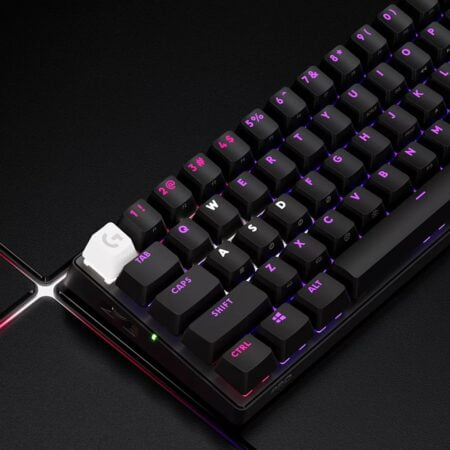
Flipping the Pro X 60, you will discover two adaptable feet; however, they provide minimal inclination and elevation to the keyboard. The absence of a wrist rest causes the keyboard to sit at a low position, even with the extended feet. Consequently, prolonged typing becomes less enjoyable, particularly for my aging wrist resembling that of an ape (with apologies to Nabokov). On the other hand, portability is not an issue due to the accompanying carrying case (depicted above). Additionally, the bottom of the keyboard features a compartment to conceal the Lightspeed USB receiver when it is not in use—more information on this wireless connection technology will be discussed later.
Introducing: Fresh Keys in the Neighborhood.
The Pro X 60 introduces two new Logitech switch variants: the GX optical tactile and GX optical linear switches. The tactile switch offers a weightier transition with a distinct actuation, whereas the linear switch presents a lighter, seamless transition and actuation. Our evaluation model is equipped with the linear switches, and despite delivering a gratifying click, I noticed significant key instability. In fact, when shaking the keyboard, it seemed as though the keys were on the verge of falling off the board.
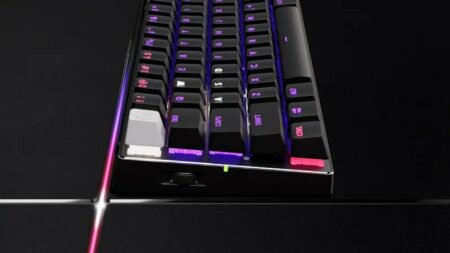
Logitech could greatly reduce the noticeable typing noise by implementing sound-dampening modifications similar to those found in other keyboards. Unlike Logitech, the Alienware Pro Wireless Gaming Keyboard incorporates both upper and lower sound-dampening layers, while the Razer BlackWidow V4 75% utilizes the “Tempest” mod, which entails applying painter’s tape or masking tape to the back of the PCB board within the chassis to achieve a quieter sound.
The keys may produce a loud sound, however, they provide durability by ensuring a 50-million-keypress lifespan limit, a figure that is substantial yet relatively conservative. SteelSeries and Razer’s other optical switches can withstand over 70 million keypresses before showing signs of wear.
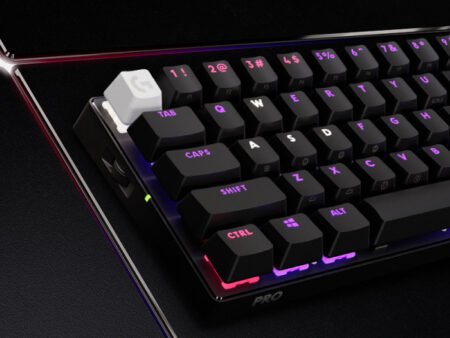
When discussing key presses and key switches, you may be curious about the distinction between an optical switch and a traditional mechanical one. Essentially, the difference lies in the method of activation. Optical and mechanical switches have a similar structure overall. However, mechanical switches rely on a metal leaf physically triggering a connection, while an optical sensor detects a light signal to register a key with optical switches. The advantages? Optical switches have fewer physical components that could potentially wear out, offer faster response times, and are easier to replace. Nevertheless, the fact that the Pro X 60’s switches are not hot-swappable renders the last point irrelevant in this case.
Software: Your Ultimate Hub.
The Logitech Pro X 60 may not have the most impressive features or design, but Logitech offers something that sets it apart. Enter Logitech G Hub, the customization software that allows you to personalize your keyboard’s RGB lighting, commands, and macros. Additionally, the Pro X 60 includes G-Shift, Logitech’s version of the “alt mode” found on many compact keyboards. With G-Shift, you can easily remap your keyboard with different key functions, seamlessly switching between normal and altered settings by pressing the G-Shift key. While creating a profile may require some effort, the keyboard comes with preloaded profiles for popular competitive and non-competitive games, allowing you to jump right into gaming.
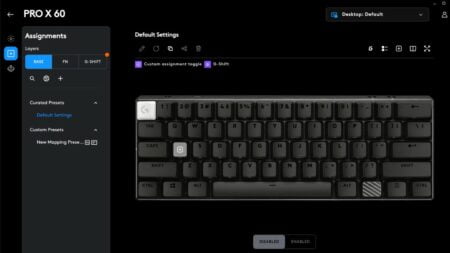
The Game Mode settings for the keyboard can be customized in this section. Game Mode is crucial for professional gaming, as it deactivates keys that may cause issues if pressed unintentionally in the middle of an intense match (such as the Windows key).
It may take a while to become familiar with navigating G-Hub. The interface is packed with features, but it is well-crafted and user-friendly. Additionally, it offers seamless integration with Discord, Streamlabs, and OBS, allowing streamers to access specific shortcuts while using those applications. This is definitely a valuable perk.
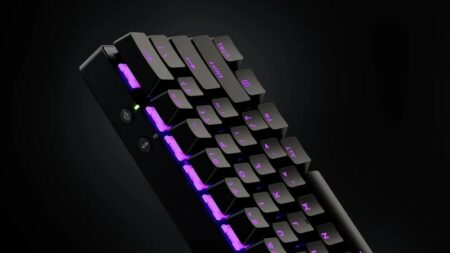
The final impressive feature of the Pro X 60 is its Lightspeed USB receiver, designed to offer a wireless solution that ensures both low latency and reliable performance. Logitech claims that, similar to Razer’s HyperPolling dongle, Lightspeed enables gamers to enjoy the same, if not better, performance as a wired keyboard. By using the dongle, users can benefit from a 1-millisecond report rate, equivalent to a 1,000Hz polling rate. This means that the keyboard instantly registers and reports its inputs, effectively keeping up with its wired counterparts. Although we didn’t participate in an esports competition while testing the Pro X, we have to trust Logitech’s assertion. However, I personally didn’t encounter any significant issues while typing or gaming with the keyboard, aside from occasional chattering keys.
Verdict: A Late Arrival to the 60s.
After examining all the features provided by the Pro X 60, the crucial question of its value arises: Does it justify the? According to various sources, it fails to offer any remarkable attributes as most of its features are borrowed from other Logitech devices. Additionally, despite the presence of new optical switches, they exhibit a level of instability that is unexpected from a keyboard intended for competitive gaming.
It is not necessary to do something new in order to be considered good. However, Logitech’s first attempt at a 60% board is not particularly outstanding, especially considering that it comes late in the game. Other older keyboards such as the Corsair K70 Pro Mini Wireless, the Razer Huntsman Mini Analog, and the HyperX Alloy Origins 65 offer similar features at a much lower price. The Huntsman Mini Analog, which is excellent, is , while the K70 RGB Pro Mini, which has won the Editors’ Choice award, now sells for considerably less than its original. Additionally, if you are open to trying low-profile switches, the Asus ROG Falchion RX is another excellent 60% option.
The Pro X 60 may not justify its current price tag. While it could be suitable for professional gamers seeking a wireless 60% keyboard, those looking for a significant improvement over other available options may be underwhelmed by Logitech’s latest offering.

